A World Without "Server Landlords": Mathias's Pear Tech Ecosystem (Part 2)
A Peer-to-Peer Hardcore History for Tech Nerds (Mathias's Version :)

Mathias Buus,Mathias Buus, Distributed Network Technology Researcher, Creator of the Hypercore Project, and CEO of Holepunch
Interviewer:
jiang, Contributor of Social Layer
前往中文版
Core Contributer: Zhao Yang 赵阳
Visuals & Editor: dca5 & Shiyu
Editors' Note: This is the second installment of a two-part article. For a discussion on the history and foundational technology stack of P2P, please see A World Without "Server Landlords": Mathias's Pear Tech Ecosystem (Part 1)
Envisioning "Serverless" Applications
Jiang: And with this serverless architecture, what are the apps that you think will be built on it, and what apps really have advantages over the current applications?
Mathias: That’s really a good question. I think there are two categories of apps we think about. There are obviously media apps. Media apps means apps that handle a lot of media, like a lot of bandwidth, because media is just really effective in peer-to-peer, it is something that consumes a lot of video, calls, that sort of thing. It's just really good on peer-to-peer, because the bandwidth you can distribute between peers, rather than having centralized bandwidth, which is extremely expensive, so that's really important.
And then you also have another category of apps, which is data distribution, so something like a chat app, I think, is also a really good example, because you have data where maybe hosting that data initially is not the biggest problem price-wise, but as you have many users, it becomes very expensive. But also, there are the privacy aspects of that, and the ownership aspect of that. Who owns the data if it's living somewhere? Chat data, for example, can be very sensitive. When you chat, you tend to say your honest feelings. So if that's living on some server, that can be very concerning, but if it's just living on your devices, first of all, nobody can censor you, because it's just protocols going between devices. If you have a direct message with somebody, it's just you and that person talking. That's very powerful, because there's no person in the middle that sets any rules, because it's just software.
I think that's very interesting. It's very good for those kinds of things: strong ownership of data and things that consume a lot of bandwidth, and local-first applications. It's not something we're doing much right now, but something we want to do extensively. Basically, environments where you have local connectivity, but not necessarily global connectivity. So it's always frustrating to me that we can sit next to each other and use an app, and then to send messages, it has to go to some third-party server in some distant location to come back to us again. That's excessive. Why can't they just travel locally so we can have local conversations?
Jiang: Like a party game. If we are playing a game in the house, we can just connect directly.
Mathias: Yes, exactly. And I mean, for playing games, latency becomes better. Also, if you're playing like a shooter, you want to have low latency. So it's really important for that. I think for me, obviously there's complexity with running peer-to-peer, because you need to think more about security at the protocol level, but at the end of the day, you can still make normal apps. Almost every app can be made peer-to-peer because you don't have to change everything about your app. But you get all of these benefits that are very strong.
Jiang:It made me realize that peer-to-peer games are a particularly important use case. Building games on a blockchain isn’t especially compelling for trading NFTs or in-game items, but it does make a lot of sense for enabling true peer-to-peer play. We can just play the game, connect directly, and expand to more players. So we can have a decentralized MMO RPG.
Mathias: Yes. I mean, there are going to be challenges with that if you scale it up, because those tend to go very global. But definitely, and there's this cool project in our community called Holesail which just runs a small proxy locally that captures your local traffic and then sends it over the peer-to-peer network. I've actually used it to play some games. Because I'm a little bit older, I'm around 40 years old, so I played some of my old games, which still work. I played a strategy game called Transport Tycoon, which is one of those games where you make trains and they run around.
To play multiplayer you need to connect to somebody else's IP, which doesn't work because everybody has firewalls. But I just run it through this little program: I basically tell my game that other peers are localhost, and then my friend runs it, and then they communicate through the peer-to-peer network. As you said, it would just be local, basically, even if they're in another house. We can actually take this game that wasn't made for peer-to-peer, but we can just make it peer-to-peer, because the game just thinks it's running like a local server. I think that's really impressive, and it's very social, so it's just good technology.
Jiang: So for Pear, what do you think is the secret weapon and the killer features?
Mathias: The killer app? The secret weapon? I don't know. I've been thinking about it a lot. And I don't think there is one thing, because I think it's based on what we talked about in this interview, there are so many things that by themselves, if you just took one of them, maybe it's not enough, but all of them combined is very interesting.
I think for me, the true power of peer-to-peer is unlocking developers to make whatever they want, because the tools allow you to just make this technology with software, just by installing software. You don't have to spin up new infrastructure. You don't have to manage infrastructure, because the software is the infrastructure. And you can make all kinds of apps that you could also maybe normally do in a centralized environment, but it would just be very expensive, or maybe you would get censored, or maybe it gets shut down.
But you can make this with peer-to-peer, similar to BitTorrent, where you can just make a file-sharing app and nobody can stop you from doing that. I think that's the true superpower of peer-to-peer. We can simply make apps and they run. We don't have to think so much about everything else, because the peer-to-peer layer solves the data distribution, and we just make apps that are enjoyable and useful.
And instead of making one app, we can make 100 apps, and one of them will be really impressive, because we don't have to spin up 100 servers. That would be a lot of work if you wanted to do that.
Jiang: And they will have wonderful interoperability, like the App Store.
Mathias: Yes. And they would have a common layer for the peer-to-peer data, because that's how it works. So you can do interesting things. We don't do this much yet, but it's a compelling idea to create an interoperability layer where I can take the data from your app and import it into my app, because it's peer-to-peer all the way through, and has cross-app integration like that. So I actually think the infrastructure itself is the secret weapon because of that, and we'll just have many different apps on top.
Blockchain, Bitcoin, and Pear
Jiang: Yes, that makes sense. And the other question is, So Pear and IPFS and ScuttleButt, these technologies, are all decentralized, and the most successful decentralized platform is blockchain, especially Bitcoin. So how do you think Pear and the tech stack and the ecosystem can be integrated with blockchain or Bitcoin?
Mathias: Great question. Obviously, Bitcoin is massively successful. I think I mentioned yesterday in a talk about it: this is the fourth biggest asset on earth now, which is incredible, bigger than most major companies. Apple is just bigger than Bitcoin, but it's an incredibly large, open source, successful project.
For me, Bitcoin is very interesting because it shows that people care about decentralization, and shows us that people can see value in decentralization, that’s the actual value in Bitcoin. As you mentioned before, blockchains are not necessarily good for all use cases because they make many trade-offs to achieve strong consensus, because you don't want your transactions to be reversed randomly. Which means they're not necessarily very good for things like games and all the applications we've been discussing. They're not very real-time.
Jiang: They serve as the financial layer.
Mathias: Exactly. They can serve as a financial layer. I think the interoperability between the two things is really interesting, where you can have blockchains to do financial transactions and then offload actual data to peer-to-peer networks. And maybe the peer-to-peer networks want to have a use case like if I want to buy data from you, so I send you a blockchain transaction, and that has a proof that then unlocks the data in the peer-to-peer network. So the interaction is really beneficial. It's not like I don't think we should run a financial system on peer-to-peer technology, necessarily. I think that would also change the trade-offs, and I wouldn't want to run a data network on a blockchain. So you need both for different things, but the interoperability between the two is really interesting.
Jiang: For the applications built on top of the Pear platform, how do they monetize? How do they sell the apps?
Mathias: Yes, that's something we're working on. We're working with the Tether group to create this thing called the WDK, the Wallet Development Kit, which is software for making it very easy to run crypto wallets in your applications, just a pure software project. I think having very good integration for these things solves a lot and provides a lot. We had 500 modules, if you also have some modules for doing really good wallet integration, that creates a cohesive story. No matter what you do, you can just make apps where you say, "hey, send me some bitcoin to do this, and the app will then unlock things, send you the key for the data stream" and similar functionality.
We're also working on various primitives so you can unlock data based on that if you wanted to. But I actually think that just having the ability to charge for things is interesting. You can imagine an app store where you just buy something, you get the key. I think it doesn't have to be much more complex than that, but it requires good software. And the software, again, has to run on phones, has to run on desktops, has to be easy enough that normal people can use it. That's what we're hoping to achieve with the WDK, and I am very excited about that.
Jiang: But does Bitcoin support the required transaction throughput, or would you use Lightning?
Mathias: Yes. Well, Bitcoin is very slow, right? That's a feature. And I think there are use cases for different things. Maybe if I was buying a car, I would do it in Bitcoin, because that's acceptable. But if I'm buying a coffee, that's obviously too slow. And I think that's also for us, with the WDK you want to have different strategies based on what you're doing, right? So you can also imagine, maybe you want to accept donations. You probably want to accept those donations in Lightning, I'm guessing, because it's easy for people to just send you a couple dollars, or whatever they want to do. So different use cases require different methods. For me, it's all about giving the capabilities to the developers so they can do what makes sense.
Jiang: I think people will be curious about the relationship with Tether, and also why Tether is interested in funding and building such a peer-to-peer platform, and what landscape Tether wants to build.
Mathias: So, I mean, Holepunch is co-founded with Tether. We're close friends with Paolo Ardoino, who runs Tether, and before we did Holepunch, we did a lot of peer-to-peer technology with all the people from Tether to help run infrastructure for some of their other projects. So we have a long relationship.
I think for us, for me especially, as we talked about blockchains and people in the space, Bitcoin is the fourth biggest asset in the world, which is incredible. There's a very good mental overlap between people actually doing peer-to-peer and doing blockchain in terms of wanting to see change in the world, wanting to make a difference in how we do things and rethink how we make applications, or finance. It's the same mindset of: let's start over and do something that's more resilient from the beginning, and Tether definitely shares that. Everyone there is technical, and Tether is very interested in peer-to-peer for the same reasons.
I also think, just building peer-to-peer networks, although they're very cost effective, is still going to require a lot of funding and capital, because we need to hire people. That's expensive. But also, we need to bootstrap these networks with various infrastructure. We're not trying to do an open source project, that's just an open source project. We want to do something that has a big impact on the world, and that's going to take serious effort. Tether has shown, just with what they're already doing in stablecoins, that they're a very serious business and the biggest player.
So I think for me, it was the easiest decision ever to partner with them for this, because we share that mindset, and they're probably the only ones out there who actually share this mindset of wanting to see change in the world, and not just "hey, let's make a peer-to-peer system and launch a token," because we would never do that. We don't want to launch a token. We just want to make free infrastructure and then monetize with other things, like useful apps. Infrastructure and peer-to-peer should be free and not be tied to some token. But it's still going to require funding, right?
Jiang: How will the Pear application ecosystem be related to the stablecoin or Bitcoin functionality?
Mathias: It's like what we talked about. I think it's just the monetization layer for any kind of application. I think blockchains and stablecoins are just very good for that. If I'm making a peer-to-peer application, and maybe I'm just on Keet, maybe I'm just a person who cuts other people's hair, like a hairdresser, and I want to get paid for that. I should be able to get paid for that in Keet through a micro-transaction based on blockchain, right? Maybe I just want to be paid in Tether, because I don't really understand other options. Maybe I want to be paid in Bitcoin. There are probably ways you should be able to get paid in Bitcoin somehow. But there are use cases for everything, right?
So for us, it's about being really focused on mainstream appeal and helping people in the mainstream, not just some niche. That's why I think stablecoins are really important for this, because you need ways for people to get paid who don't have access to banks. There's a huge number of people in the world who have no access to banks. Tether has done an amazing job at reaching those people already, and we're just trying to reach them also with technology.
The Real-World Meaning of Decentralization in an Era of Growing Centralization
Jiang: Indeed, with Bitcoin, the technology has shaped the world a lot, especially the decentralized technology. But there are also a lot of hypes, a lot of hype cycles, like Web3, NFTs,and things like that. And now people also see how the enemies of decentralized platforms, the big companies like Facebook, Google, Amazon, they’re also shifting into a new phase. I don't know exactly how to name it, but I think you’ll agree: in the AI era, people have a lot of concerns. The power is extremely centralized in these big companies, and they’re using the data and computing power to monopolize not just the internet, but the whole world. So in this era, how do you think the things we're building are still relevant?
Mathias: Yes, I mean, obviously, it’s a crazy world we live in right now. With AI and everything, I think we all have a big responsibility to be thinking about these things all the time. We're already working with other groups, with Tether, to build more distributed versions of AI, like QVAC, which is launching soon.
That’s a peer-to-peer-powered local AI platform. It's using peer-to-peer networks to run large models locally, without needing to spend tons of money up front on infrastructure and cloud services and things alike. There’s a lot of exciting progress going on. We're trying to really double down on decentralized AI. I always say big, centralized AI is probably the most terrifying thing I can think of.
But good decentralized AI? To me, that’s the coolest thing ever, because it can actually help me as a person. An AI running on my own devices, that knows everything about me, could actually help me with my decisions, and I think that's great. But I don’t want a centralized AI to know anything about me, because the implications of that are really scary. And obviously, that’s the direction things are going. I think it’s really concerning. And again, we all have to be thinking hard about this.
A lot of big companies, because they’re so centralized and already have huge amounts of data. Just recently, I think Facebook, well, Instagram changed their terms of service regarding what kind of data they can use. And now, unless you explicitly opt out, which is hard, because people forget, they can basically use everything. So basically, if you're using any kind of centralized platform today, your data is going to be used to train these systems.
And I think we should all be thinking about that. It's very, very important right now to already be thinking about how to shift your reality toward decentralization. To opt out of that system. Because the other alternative is really dystopian and scary.
But luckily, there are a lot of people working on alternative technologies. Like I said, QVAC is one of them. We're trying to bring together a different kind of world for AI. But yeah, it’s definitely an interesting world we live in, for sure.
Jiang: I think this is another question. So, if we had this decentralized application platform, how does it get really adopted by users? And do people in Europe have more concern with the value of decentralization? Does it help the growth of a decentralized ecosystem?
Mathias: So, to answer your first question, we're going to have to make good apps, we're going to have to make a lot of apps. Like I said earlier, it goes back to what we discussed: we need to create many applications and see which ones prove to be effective. Peer-to-peer is very good at a lot of things, and something is going to stick that becomes truly interesting, like communication. Whether it is the people in Europe, Asia, India, or elsewhere, peer-to-peer will bring connectivity and applications to groups of people who are not currently online in the same way most people are today. As we mentioned, it's well-suited for local networks, for bringing connectivity to places that don’t have it now, or for surviving in networks that experience disruptions. That’s going to be really important. I think Europe still has a long way to go in reconciling itself with the world we live in today. We're still very stuck in the past here, especially when it comes to things like decentralization. People aren't as aware of it as they need to be, even though the world is changing fast. Even in Europe, which has been known for being relatively stable for a long time, we've recently seen major disruptions, like the power outages in southern Europe where people were without communication for a full day. Everything shut down in Portugal and Spain, and I think parts of France too (Note: On Monday, 28 April 2025, at 12:33 CEST, a major power blackout occurred across the Iberian Peninsula affecting mainland Portugal and peninsular Spain, where electric power was interrupted for about ten hours in most of the Peninsula and longer in some areas. The power cut caused severe difficulties in telecommunications, transportation systems, and essential sectors such as emergency services.). So even in historically stable regions like this, things are changing, and we need to prepare for the future. I don’t think decentralization is just relevant for one specific group, it’s relevant for every group. Everybody needs to be thinking about it, and that’s why we’re doing what we’re doing. That’s why I’m doing it: to build technology that can survive these kinds of scenarios. Because beyond everything else we’ve talked about such as being cost-effective, efficient, and good at distributing data, this resilience is really important.
Jiang: I think that’s a very good point, but I see two very different approaches. One is driven by narrative, by people’s concerns about security, fear of monopoly, fear of concentrated power. But the other is about serving people who are in disconnected areas, in developing countries and regions. I think in those places, when people use decentralized apps, it’s not because of the narrative, but because there are support services they can access only through decentralized systems.
Mathias: Yeah, exactly. You can make a local mesh network very efficient, right? But connecting that local mesh network to the global internet can be really hard. We still have a lot of work to do to create value in that space. But I think it's really important, because that’s how you actually solve both problems. For example, it runs really well in a mesh network setup in the outskirts of China or India, places where lots of people live but don’t necessarily have reliable external connectivity. And this kind of system also works well in scenarios where the power goes out, because in those moments, you might have spotty or no connectivity, and it’s essentially the same technical challenge.
So to me, it’s very important to keep that in mind, without forgetting the general peer-to-peer use cases. Like we talked about, it’s also just good for gaming, good for connecting things locally. It’s the same underlying principle. It solves the same kinds of problems in different contexts. So I think it’s really important.
☀️ 专栏相关文章
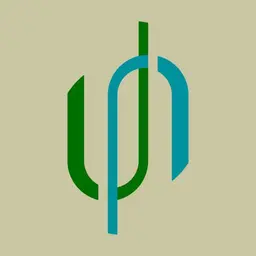

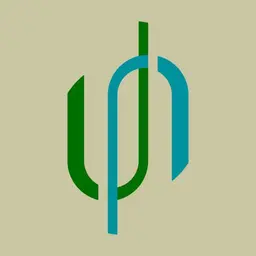

Who we are 👇
Uncommons
区块链世界内一隅公共空间,一群公共物品建设者,在此碰撞加密人文思想。其前身为 GreenPill 中文社区。
Twitter: x.com/Un__commons
Newsletter: blog.uncommons.cc/
Join us: t.me/theuncommons
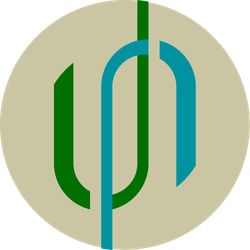

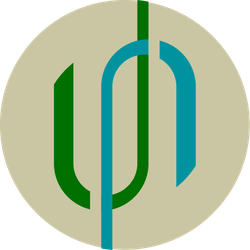
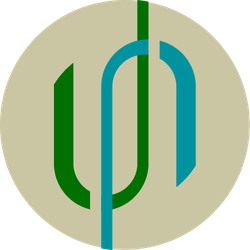

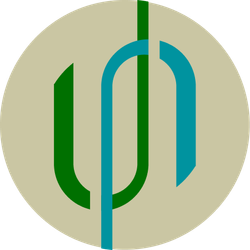
Discussion